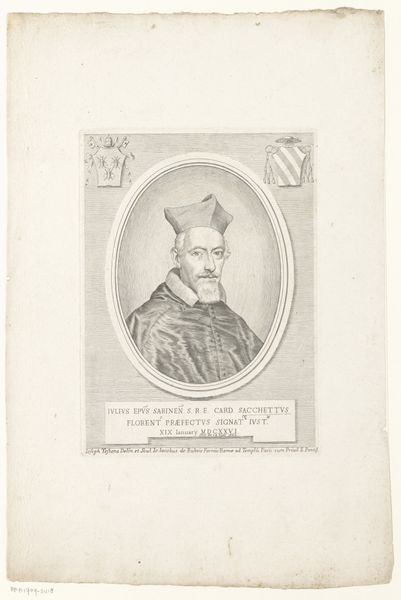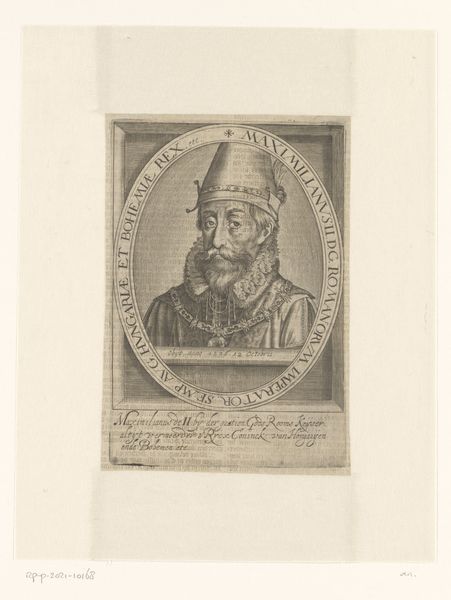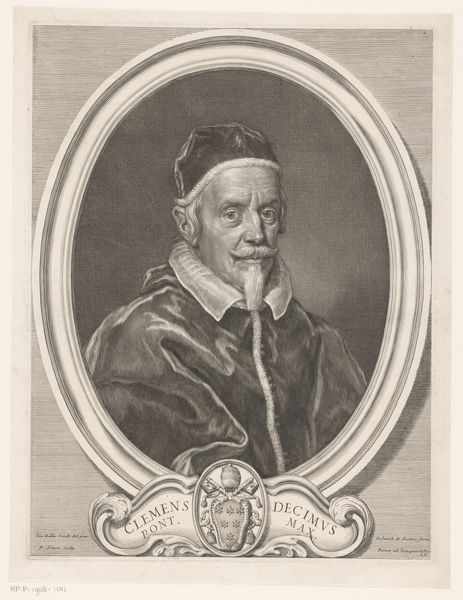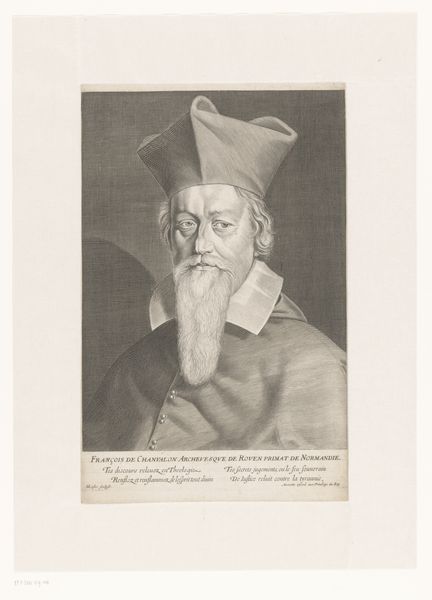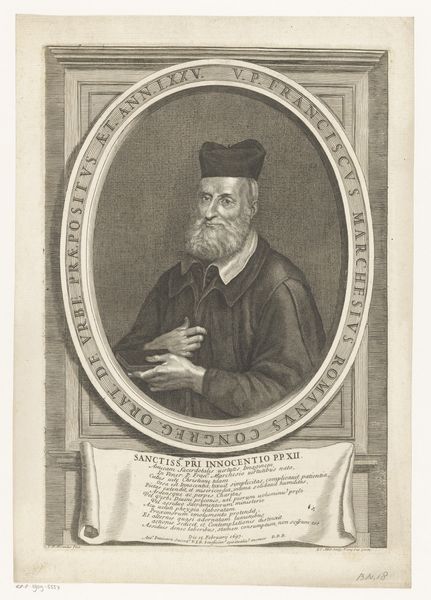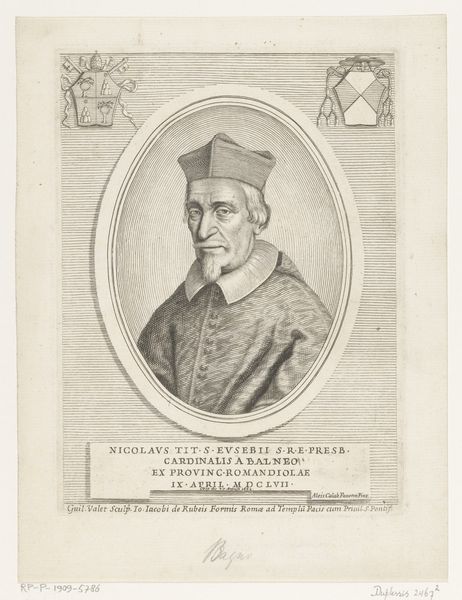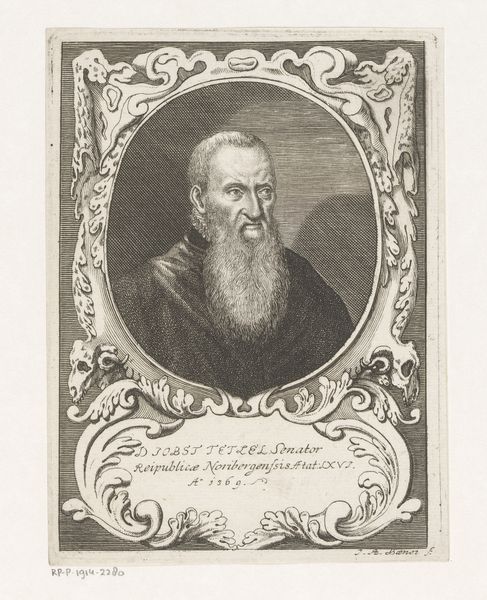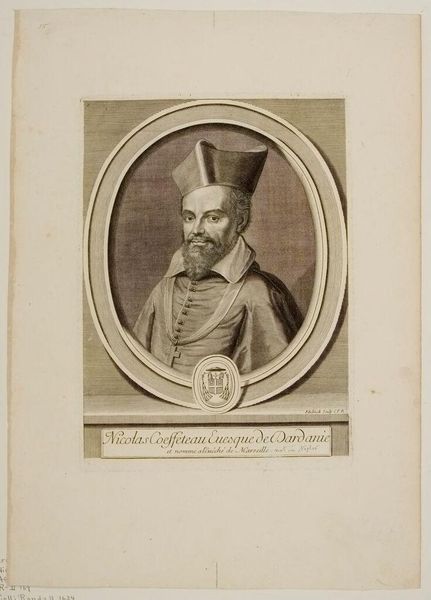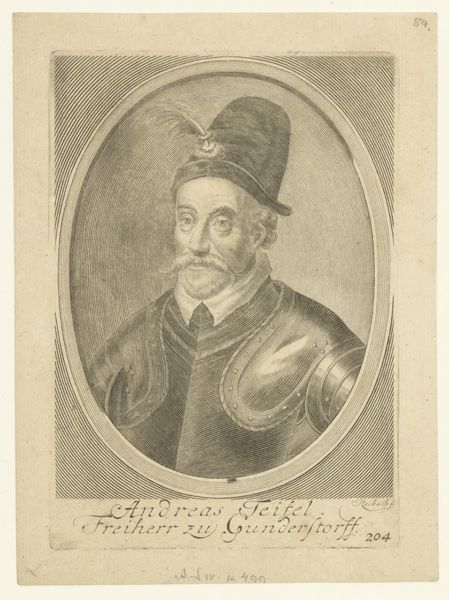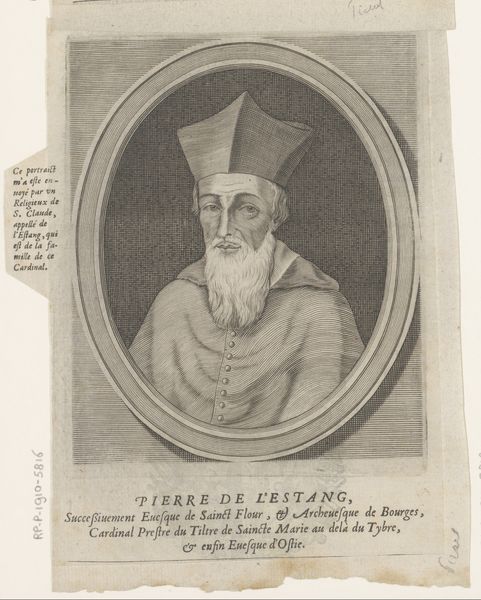
print, graphite, engraving
#
portrait
#
baroque
# print
#
graphite
#
engraving
Dimensions: height 248 mm, width 163 mm
Copyright: Rijks Museum: Open Domain
Curator: Looking at this engraving, there's an immediate somberness. It's restrained in a way that evokes a certain period gravitas. Editor: Indeed. This is a print after a portrait of Francesco Nerli, created in 1674 by Johann Alexander Böner. Nerli was, as the inscription tells us, a Cardinal Archbishop of Florence. Curator: The lines created by the engraver are surprisingly detailed. You can really see the fabric’s sheen and weight, even with this monochromatic print. How much control do you think Böner had in that process? It’s fascinating when someone reinterprets a portrait in another medium. Editor: Well, engraving allowed for the mass production and dissemination of imagery. So, prints like this helped construct and maintain the Cardinal’s image and influence beyond his immediate circles. Disseminating his power through print. Curator: Exactly. The choice of graphite and engraving emphasizes the material conditions of image production during that time and it blurs the lines between pure artistry and mechanical reproduction. This print, for example, transforms portraiture from unique display of affluence into a relatively democratic format accessible to a much broader audience. I find the way he’s framed compelling, an oval set into a rectangular block, giving this print a somewhat commercial feeling in the best way. Editor: That framing is key. The Baroque loved this sense of contained drama. Think about the history surrounding this piece, Florence under the Medici… they knew how to use images, not just portraits, as part of an overall program. That’s an important point too; who do you want the world to think you are? A somber ruler for serious times maybe? It’s the strategic projection of an identity through the arts. Curator: And it raises important questions about patronage and control. How much say did Nerli have in his own portrayal, and to what extent was this a negotiation between the sitter, the artist, and the printing workshop? Editor: All valid considerations! Examining "Portret van Francesco Nerli" allows us a small view into the complexities of art, power, and material culture. Curator: It encourages me to remember that we look at portraits through time but that material transformation keeps the power present for later eyes.
Comments
No comments
Be the first to comment and join the conversation on the ultimate creative platform.
